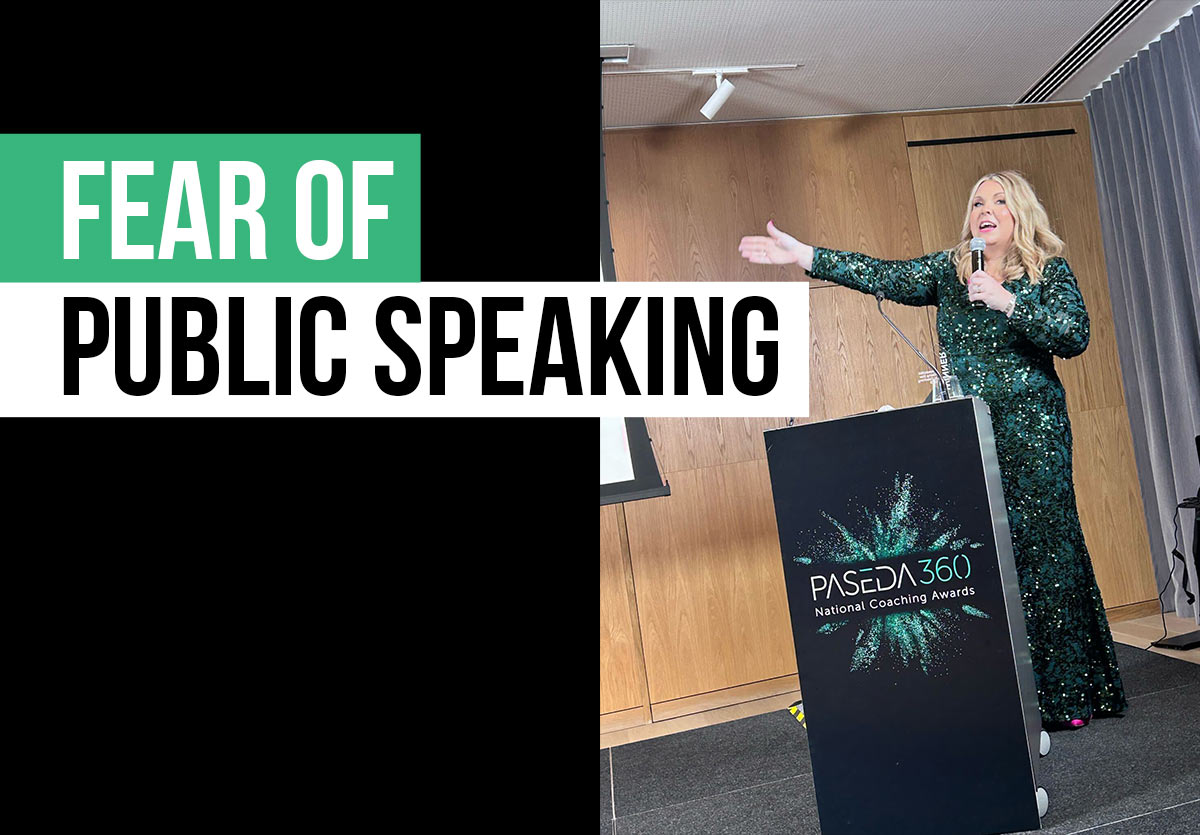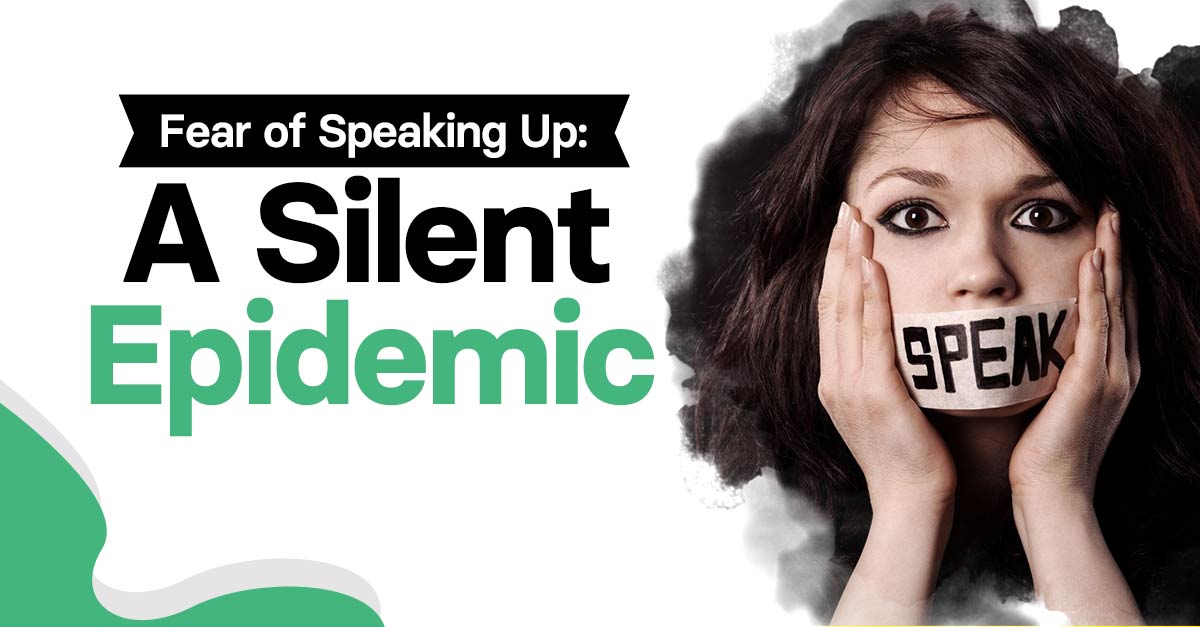As a coach, it’s not uncommon to have clients come to you with a fear of public speaking. They might talk about situations where they have to introduce themselves in a meeting and they feel panic waiting for their turn, through to feeling full blown stage fright ahead of a keynote speech.
Public speaking anxiety, also known as glossophobia, is one of the most common fears around the world. It affects people of all ages and backgrounds, from students presenting in class to CEOs addressing their teams at an All Hands event.
In this article, we will explore the root causes of public speaking anxiety, how it manifests in the brain, and steps you can take to help your clients overcome this fear.
What is going on in the brain when a client is put on the spot?
Public speaking anxiety is an emotional response triggered by the amygdala, the part of the brain responsible for processing emotions. When we’re put on the spot, the amygdala interprets the situation as a potential threat and sends signals to the hypothalamus, which activates the body’s stress response system.
I like to think of this as a landmine being triggered.
The trigger leads to physical symptoms such as increased heart rate, sweating, and shallow breathing. We can all relate to how horrible that can feel.
At the same time, the prefrontal cortex, the part of the brain responsible for decision-making and reasoning, becomes less active. This can lead to difficulty in recalling information, organising thoughts, and staying focused.
The combination of physical and cognitive symptoms can make it challenging for clients to deliver a successful speech or presentation.
I’ve enjoyed delivering keynote speeches for the last 5-years, and whilst I feel a healthy amount of nerves, I do this with relative ease. I feel a bit anxious beforehand. I feel wobbly for the first few minutes, and then I get into flow and enjoy it.
Interestingly though, a few weeks ago I had to pitch Paseda360 to a group of entrepreneurs. There was a strict time limit and a number of things I needed to fit in. I felt okay for the first few seconds, and then noticed my body was shaking. I couldn’t wait for it to be over.
I reflected afterwards and realised it had triggered a deep seated belief that I must get everything right when I am being tested. It’s a belief I have worked on many times, but it can rear it’s head in the most unexpected ways.
And beliefs will play a big part for your clients too, fuelling the fear, and eroding the confidence
The belief system plays a critical role in shaping our emotional response to public speaking. Your clients with public speaking anxiety will have negative beliefs about their ability to speak in public, such as “I always mess up when I speak in front of people” or “People will judge me if I make a mistake.” These beliefs are often rooted in past experiences, such as a negative feedback from a previous speech or criticism from a teacher.
These negative beliefs trigger a self-fulfilling prophecy, where the client expects to fail, leading to increased anxiety and ultimately, poorer performance. It becomes a vicious cycle where the belief system reinforces the anxiety, and the anxiety reinforces the belief system.
What steps can we take to help clients overcome public speaking anxiety?
Step 1: Identify and challenge negative beliefs
The first step in helping clients overcome public speaking anxiety is to identify and challenge negative beliefs. Encourage your clients to reflect on their thoughts and feelings about public speaking and ask questions that challenge their assumptions. For example, if a client says, “I always mess up when I speak in front of people,” ask them to provide evidence for that belief. Ask them to recall a time when they delivered a successful speech or presentation and reflect on what they did well.
Step 2: Practice relaxation techniques
Relaxation techniques such as deep breathing, meditation, and progressive muscle relaxation can help clients reduce physical symptoms of anxiety. Encourage your clients to practice these techniques regularly, especially before a speech or presentation.
Step 3: Build confidence through repetition
The more clients practice public speaking, the more confident they will become. Encourage your clients to start small, such as practicing a speech in front of a friend or family member, and gradually work their way up to larger audiences. In a previous role I held we used to call this ‘murder boarding’ meaning you’d die on your ass in front of trusted colleagues rather than with your audience. It certainly works as they can provide constructive feedback on their delivery.
Step 4: Visualise success
Visualisation is a powerful technique that can help clients overcome negative beliefs and build confidence. Encourage your clients to visualise themselves delivering a successful speech or presentation, focusing on positive outcomes and how they feel in that moment.
Step 5: Reframe anxiety as excitement
Anxiety and excitement are two sides of the same coin. Help your clients reframe their anxiety as excitement by encouraging them to focus on the positive aspects of public speaking, such as the opportunity to share their knowledge and connect with others. Reframing anxiety as excitement can help clients feel more energised and motivated to deliver a successful speech.
Step 6: Provide positive feedback
As a coach, it’s essential to provide positive feedback to your clients. Focus on what they’re doing well and encourage them to continue building on those strengths. This will help boost their confidence and reinforce positive beliefs about their ability to speak in public.
Step 7: Encourage self-compassion
Public speaking anxiety can be challenging to overcome, and it’s important to encourage self-compassion. Encourage your clients to be kind to themselves and not judge themselves harshly if they make a mistake. Help them reframe mistakes as opportunities for growth and learning. How we think we perform is never as bad as others’ appraisal of how we perform. I learned that post pitch when people were telling me how great it was.
As a coach, it’s essential to understand what’s going on in the brain when clients are put on the spot and how the belief system can reinforce anxiety. By identifying and challenging negative beliefs, practicing relaxation techniques, building confidence through practice, visualising success, reframing anxiety as excitement, providing positive feedback, and encouraging self-compassion, coaches can help their clients overcome public speaking anxiety and deliver successful speeches and presentations.
At Paseda360 we take an additional step, to identify the root cause of the belief and reframe it using limitless light therapy. You can learn this wonderful technique on our Advanced Practitioner Course.
Find out more here…







